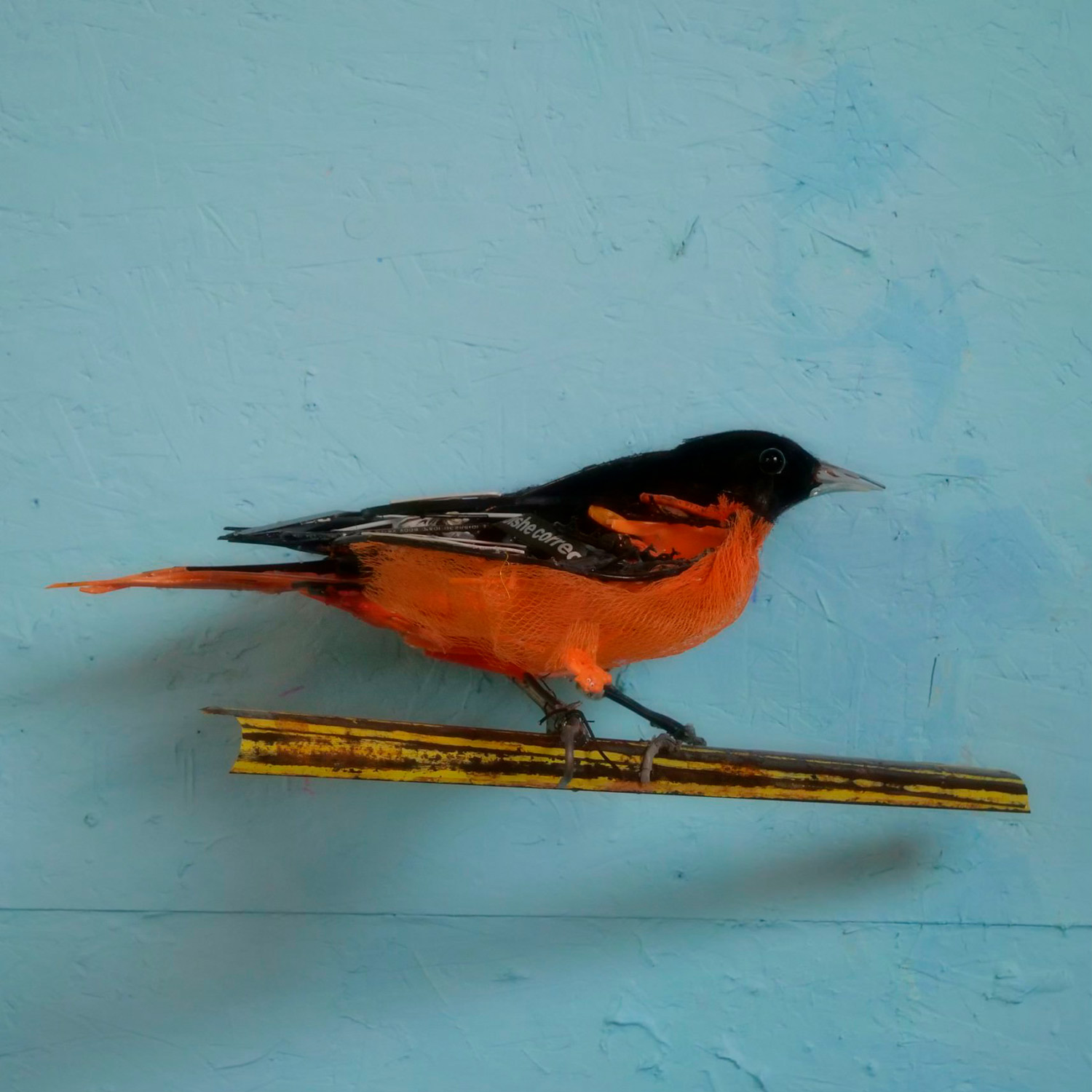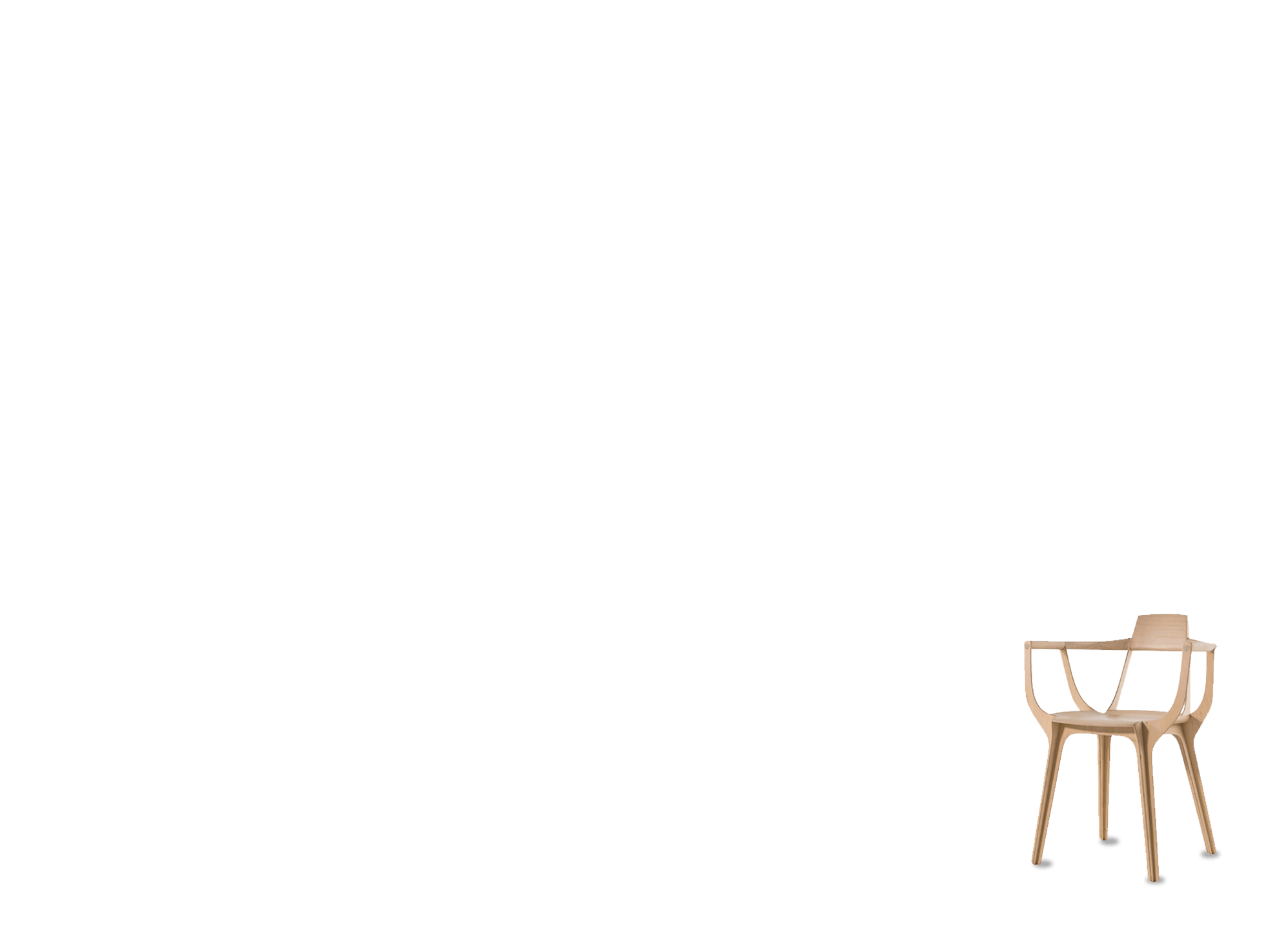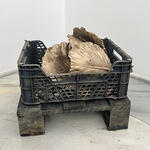
Thomas Deininger
Bio
Thomas Deininger es un artista basado en Rhode Island cuyo trabajo combina preocupaciones medioambientales con un enfoque innovador en la creación de imágenes. Sus ensamblajes de objetos encontrados están construidos con materiales no reciclables y no biodegradables que se acumulan en los vertederos de nuestra nación. Obras como esta ofrecen una respuesta reflexiva al consumismo masivo. Él invita al espectador a reconsiderar el potencial de trascendencia de lo mundano. Sus obras están en muchas colecciones privadas y públicas a lo largo del mundo.
A los veinte años, viajó por el mundo durante varios años, explorando Europa, Centroamérica y el Pacífico Sur. Fue durante estas exploraciones que Deininger comenzó a reflexionar sobre el consumismo estadounidense al ser testigo de la ingeniosidad austera de culturas no industriales y los problemas de los desechos que cubren las costas de islas distantes. Fue después de un viaje al vertedero de Nantucket que se le ocurrió la idea de hacer ensamblajes realistas a partir de materiales encontrados. Sus mosaicos de desechos son una respuesta a la forma en que las culturas de consumo masivo amenazan nuestro entorno natural. También plantean preguntas sobre el valor, la perspectiva y nuestra capacidad para hacer asociaciones significativas y desarrollar respuestas reflexivas en un mundo mediático lleno de flujos interminables de materiales y datos.
Statement
I create work across a fairly broad spectrum of mediums and employ different methods and techniques from drawing and painting to video, sculpture and installation. These various disciplines inform and often bleed into one another. It’s my belief that an idea is manifested in whatever form is most appropriate for the specific concept to take shape and be communicated. Ultimately, It’s the the idea that dictates the process.
Through my found object sculptural work I explore a variety of concepts but there are at least four or five recurring themes that are fairly consistent. They are, in no particular order or relevance, perspective and illusion in both a visual form (abstraction vs. representation) and a conceptual or metaphorical one (what we believe we understand from any given reference point versus what the complex reality may be from different vantages). I contemplate theories of order from chaos and visa/versa and human’s often futile attempts at classification and taxonomy in a messy world of entropy, disorder and sublity. My work is also both a celebration and condemnation of our consumer and disposable popular culture. I look to achieve this by subverting nostalgia and memory with common, everyday objects, familiar toys and action figurines. The individual pieces serve as a Don Quixote-like action expressing my obvious disdain for mass consumerism and the associated environmental issues created by these unsustainable habits. I also question what we value as a culture and what we consider beautiful and meaningful vs. ugly and worthless. There is an absurdist quality as I try to create a paradox of prophetic and profane. I try to create a balance in the tension between the spiritual and the irreverent.
My practice inspires me to constantly be observing the wonders of both the natural and man-made material world in all the splendid variety. I am constantly making visual connections in an attempt to be extremely democratic in my approach to materials and subjects by resisting preconceived ideas about what is aesthetically pleasing versus what is generally thought of as ugly and not worthy of my attention. I actively seek out the potential in the mundane, for
example if I am working on a sculpture of a bee I am not just studying the anatomy of a felled insect from one of my hives or a variety of images, diagrams, and videos of all different kinds of bees on the internet I am also looking carefully at everything from the human made or designed material world that bears some similarity to the bee’s psychical characteristics. The yellow straws of a discarded broom I find at the dump are ideal for simulating the hairs covering the head, thorax and abdomen, the shape and texture of my wife’s broken sunglasses work for the compound eye and the temples for part of the legs, broken records also make fantastic hind legs. The rusted metal mesh that covers the neighbor’s fire pit is useful for softening a transition on the smooth part of the thorax. Prescription pill bottles are perfect for the bee’s amber-red proboscis and jaw. Unpolished copper wires mimic the vanes that provide structure for the wings, and semi opaque covers of
Incandescent lighting works well for the translucent wings. Old film negatives are perfect for the surface of the legs. The whole world literally becomes my pallet in a practice of “reverse biomimicry”.
While I am under no illusion that my practice is contributing even in the slightest to raising any kind of awareness to the myriad of challenges we face in our collective struggle to live in a more harmonious way with the ecological systems that sustain us, I do believe I am offering a subtle way to reconsider what is useless vs. useful. I do this not so much in a literal or practical way but more in a metaphorical one. It is in this belief that art making provides a kind of catharsis for anxieties about these mounting environmental issues. It’s really an affirmation of endless possibilities and a way to think about the world at large optimistically instead of pessimistically.
My process is more like a long form of meditation on the nature of perspective, illusion and taxonomy. I am quite fascinated by the volume and variety of what our intensely creative and unique species makes and consumes and all of the amazing inventiveness and energy that fuels our narratives and the solutions to our material and spiritual world. The famous imagist poet E.E. Cummings said “To know the things we surround ourselves with is to know ourselves”. Museums, malls and dumpsters are all wonderful places to witness the magnitude and diversity of all these things and to better understand ourselves.
Additional information
All the objects come from a land field, meaning the artist is reminding us of consumerism and climate. When we think of climate, we never think of how it affects the animals in our world.


2.5 x 4m / 98.4 x 157 in

















